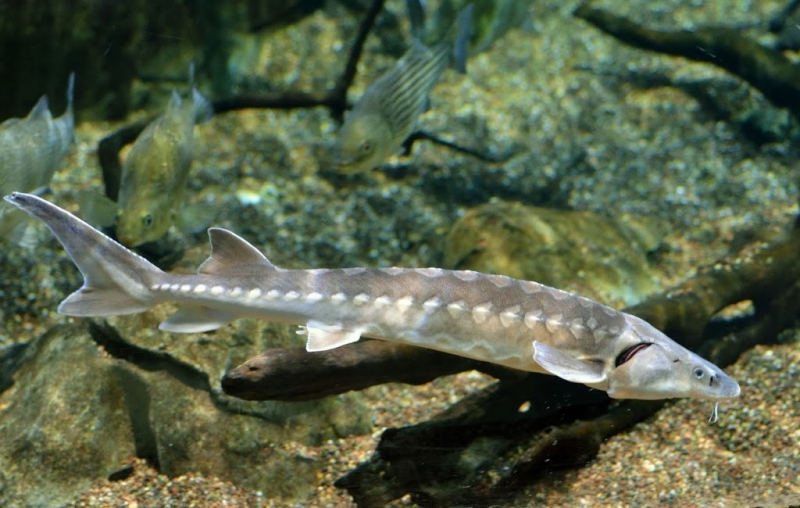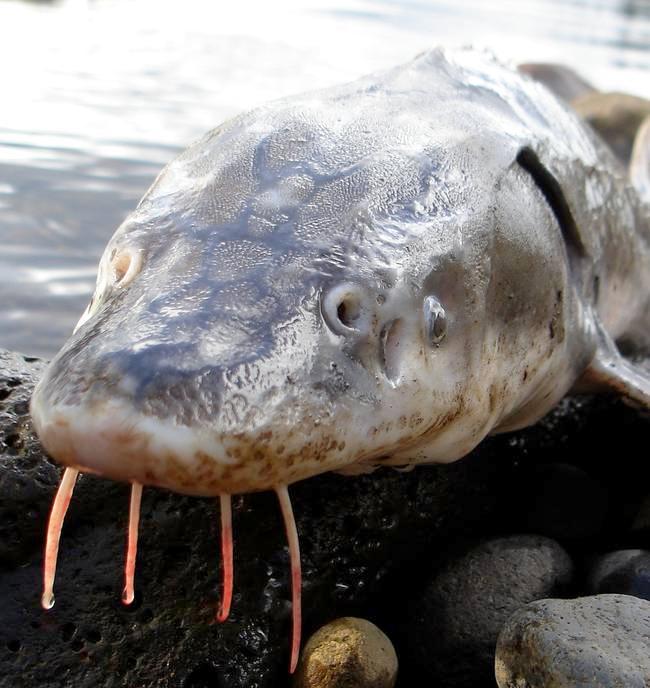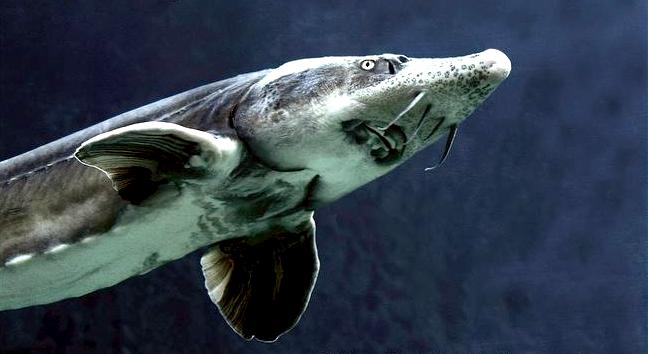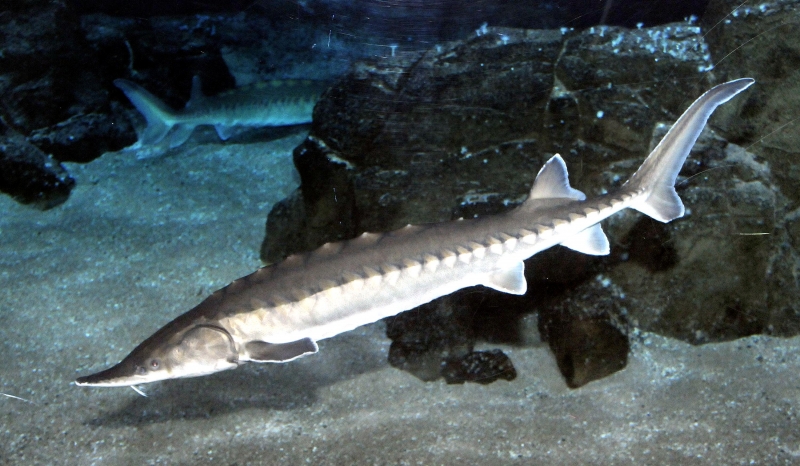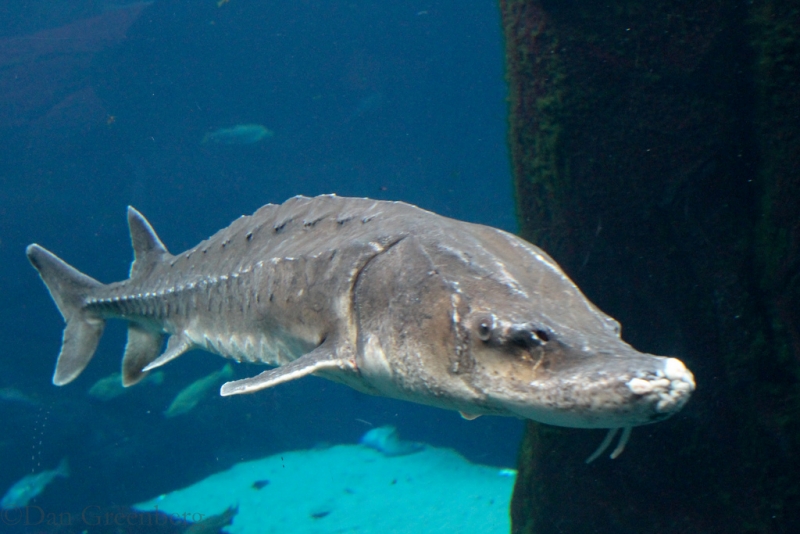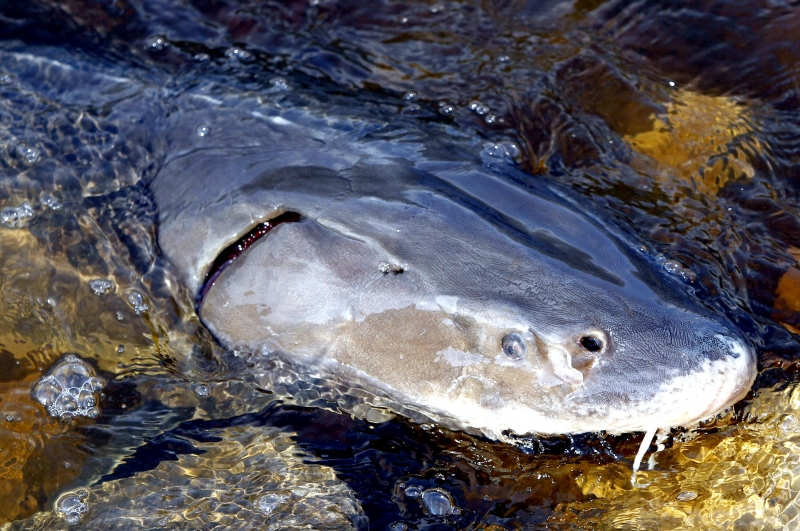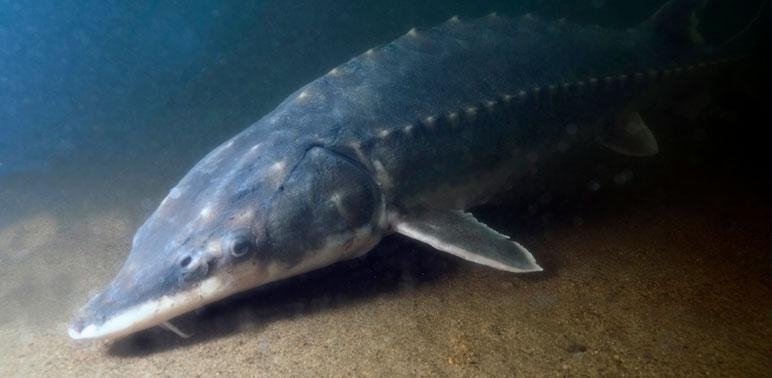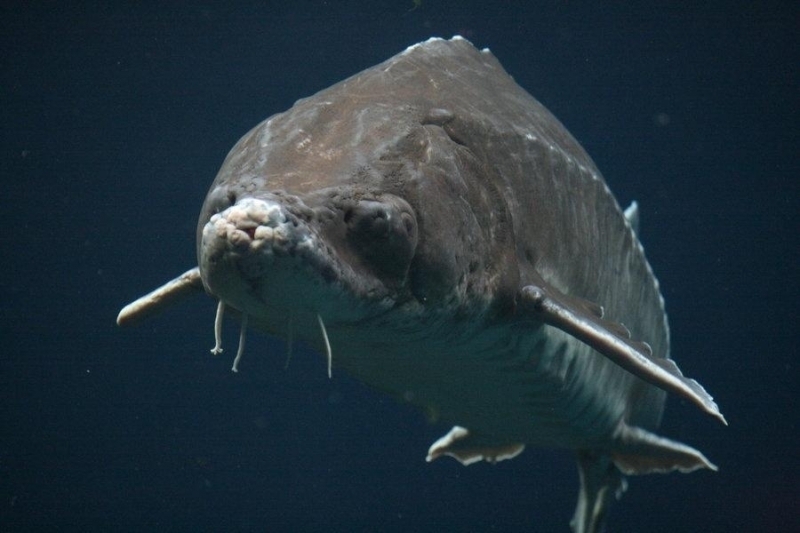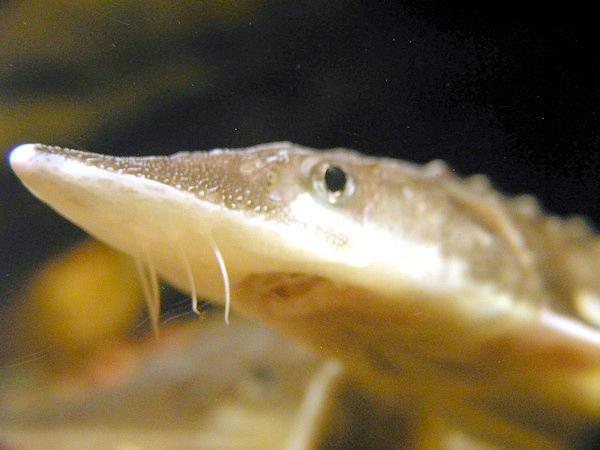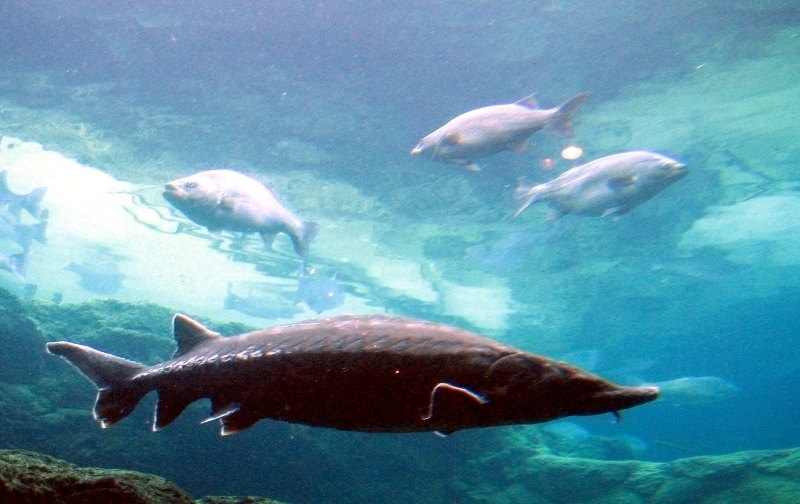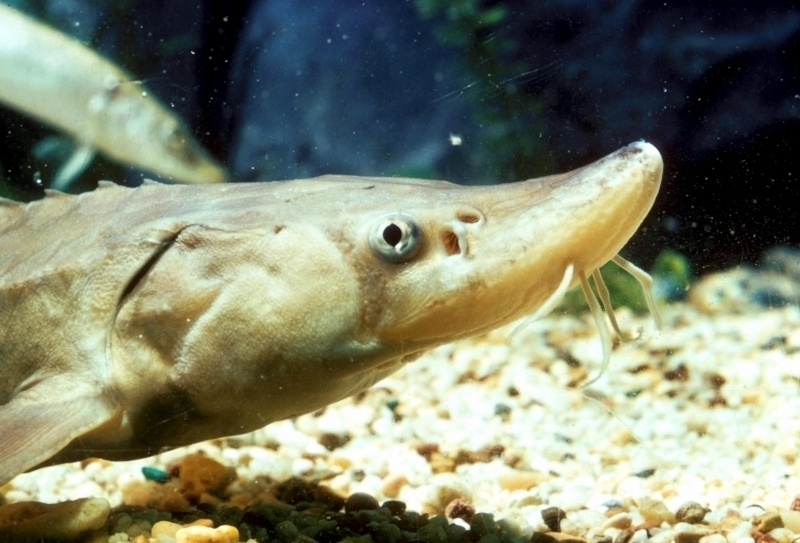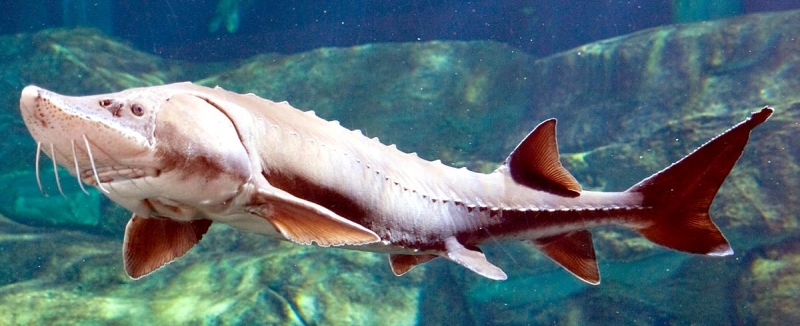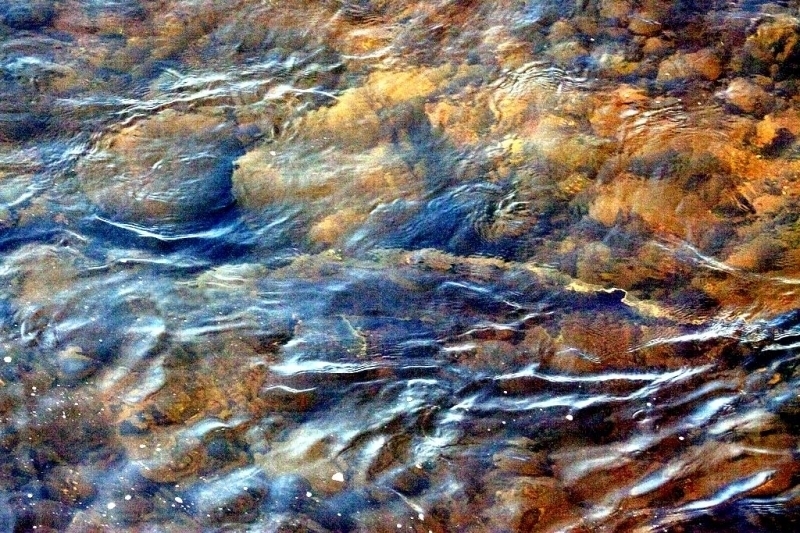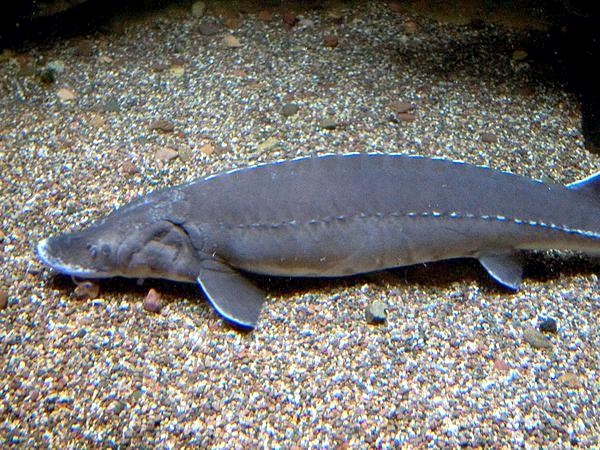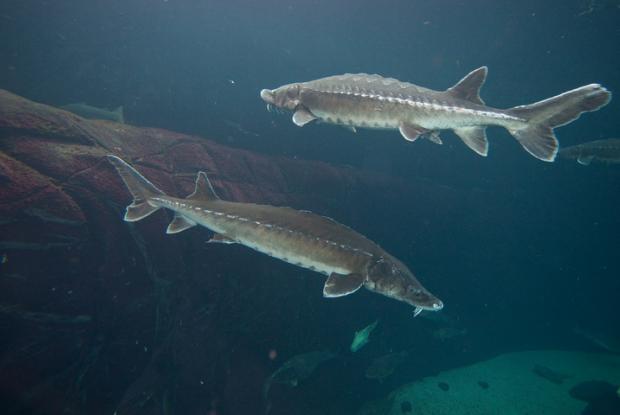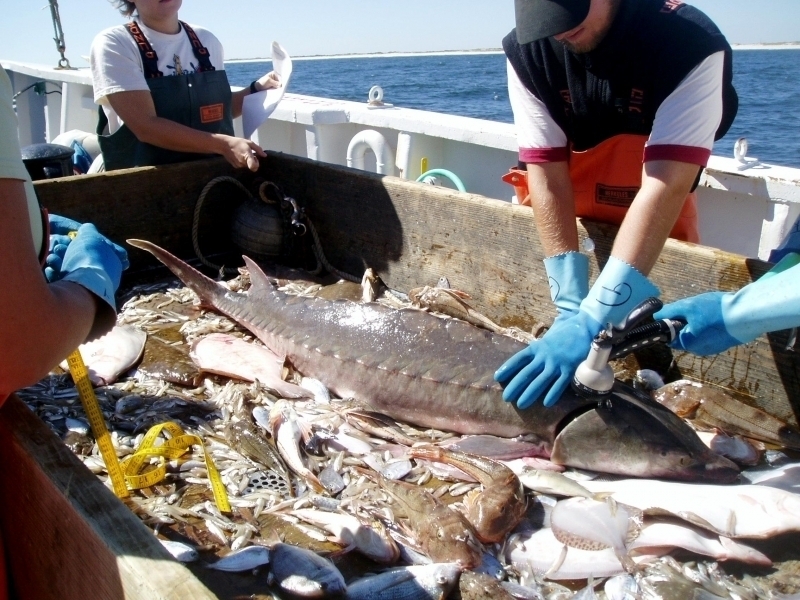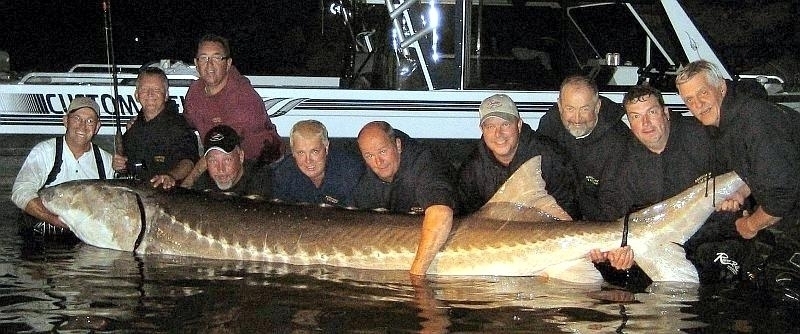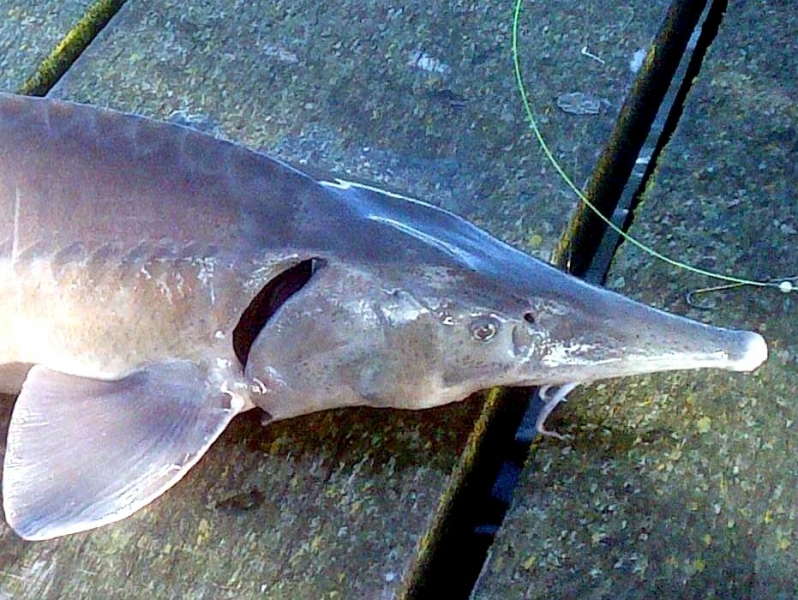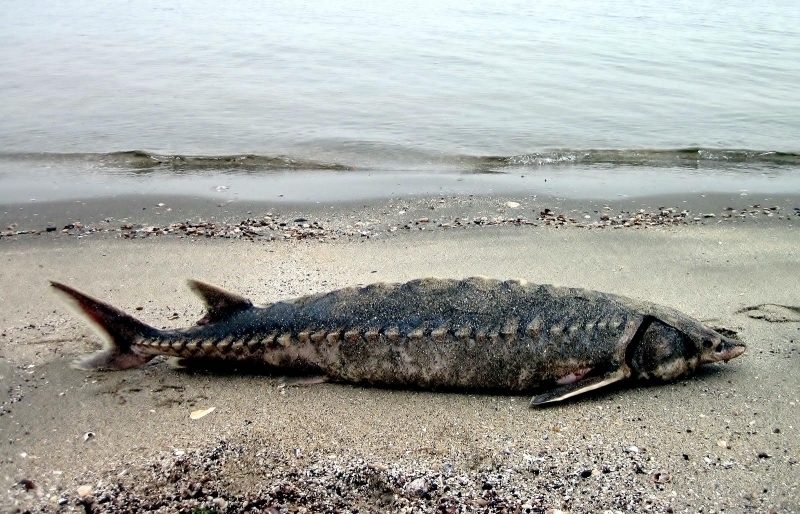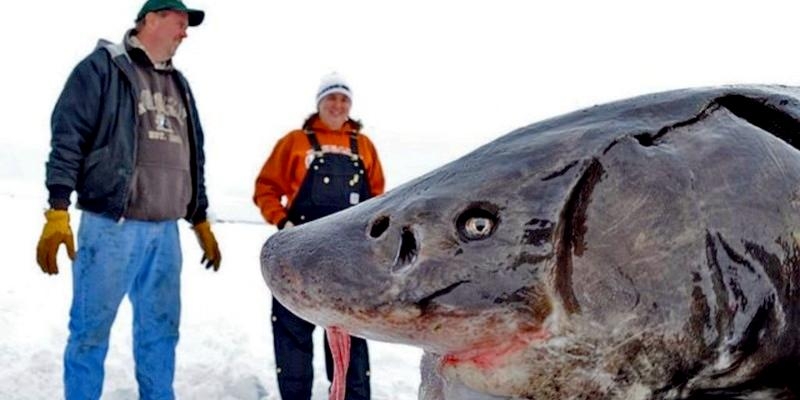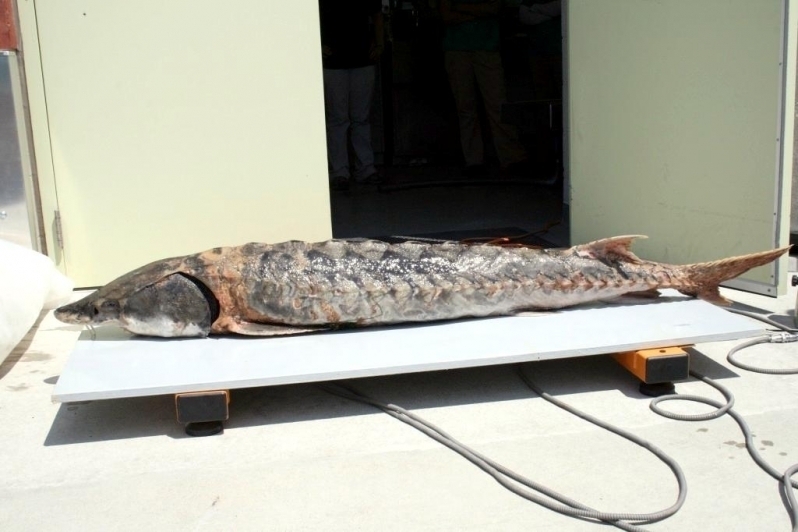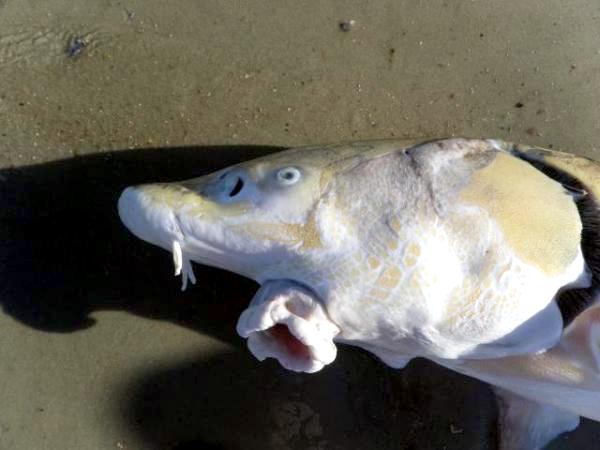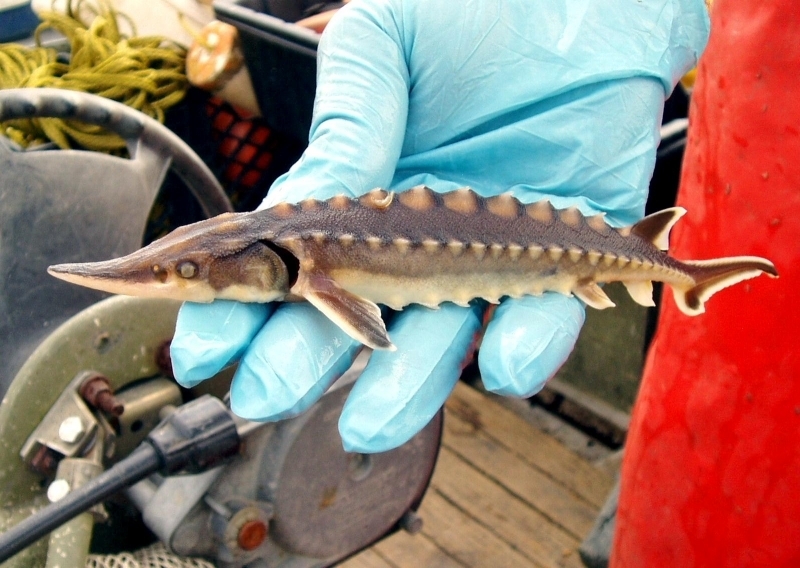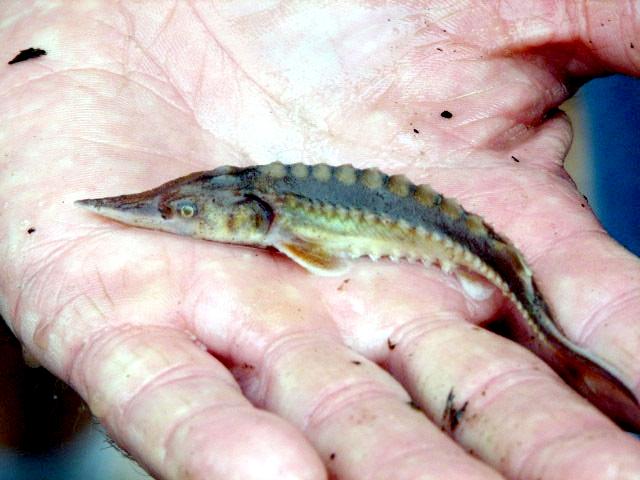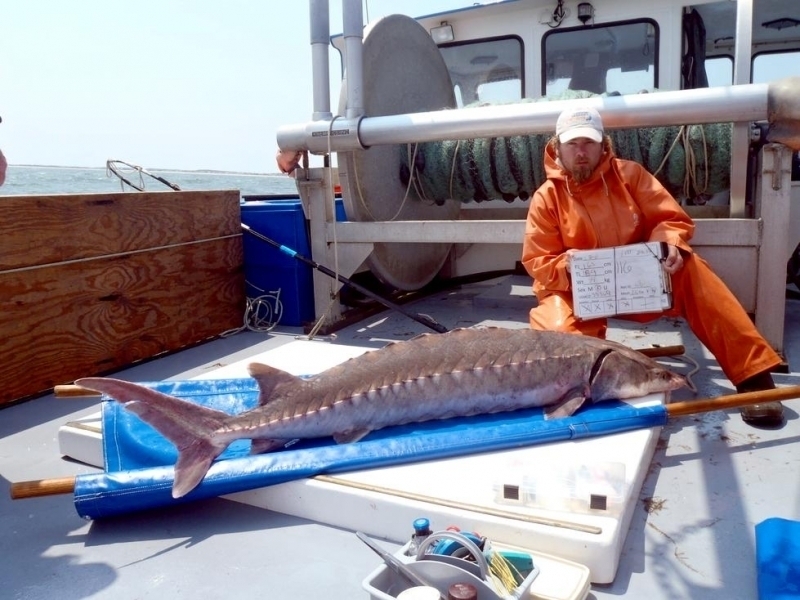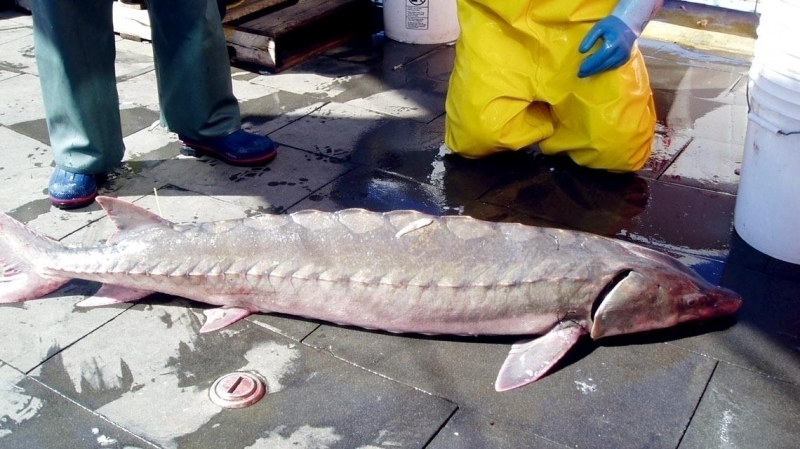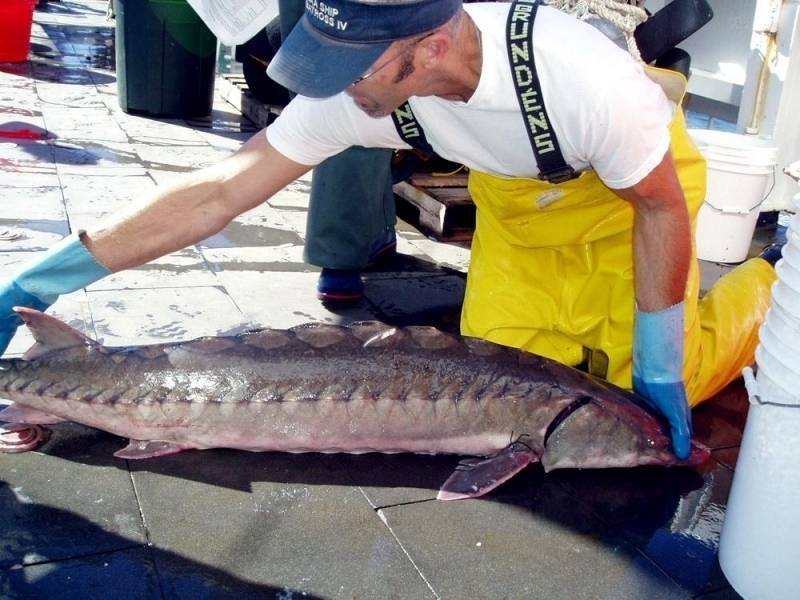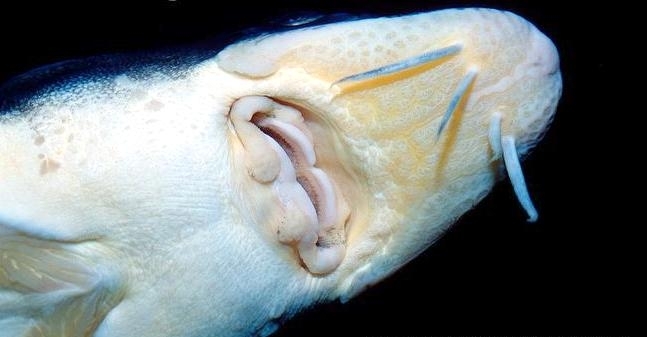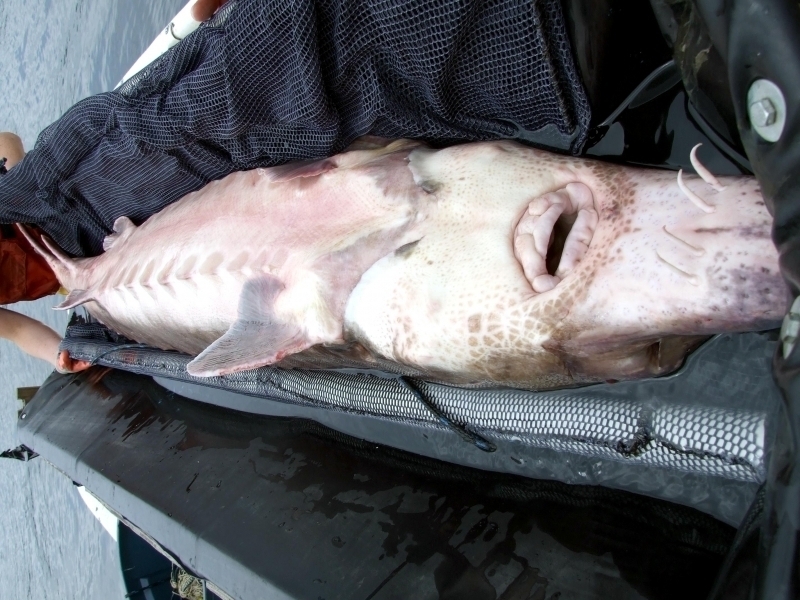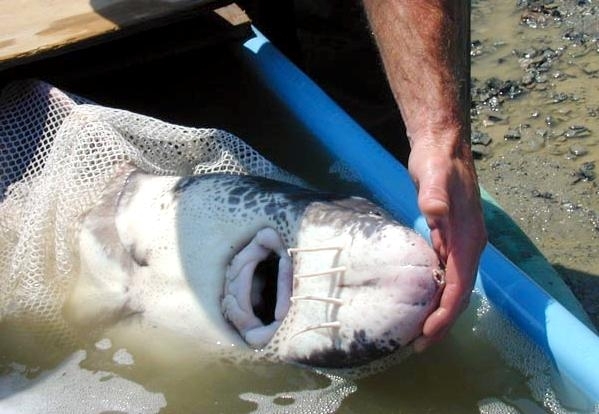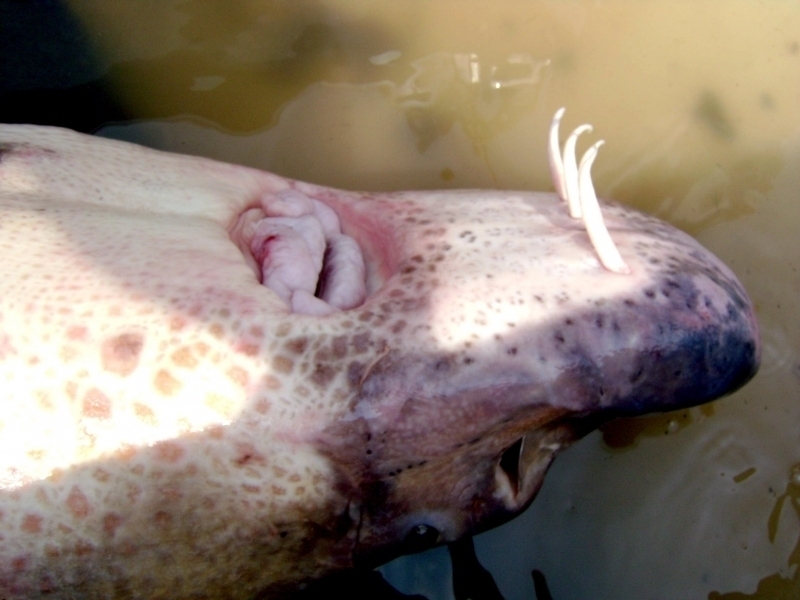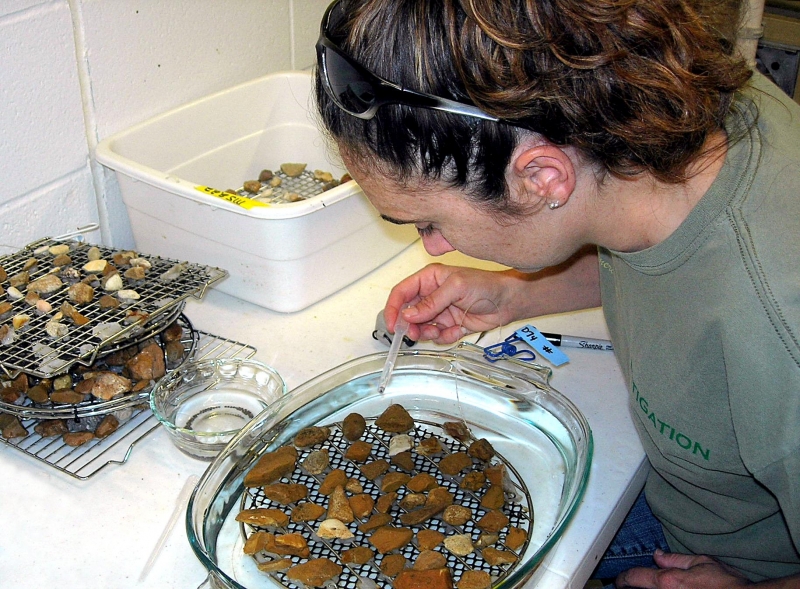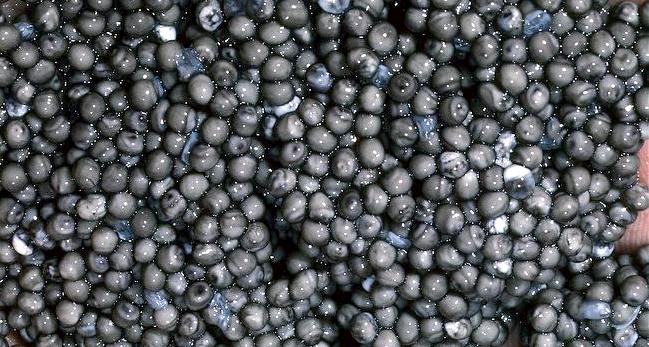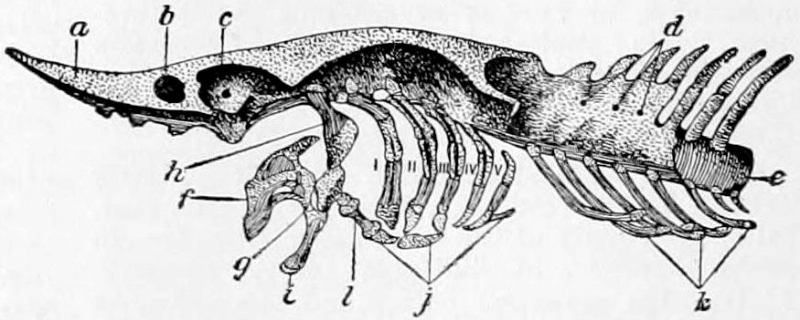“Acipenser oxyrhynchus”
The Atlantic Sturgeon has a long, hard snout with an upturned tip. The Sturgeon is a bony, ancient-looking fish that visits the Chesapeake Bay in spring to spawn in Virginia’s James & York rivers. It was once found throughout the Bay and its freshwater rivers, but is now very rare. The Atlantic Sturgeon is a long-lived, estuarine dependent, anadromous fish. Atlantic Sturgeon can grow to approximately 14 feet long and can weigh up to 800 pounds. They are bluish-black or olive-brown dorsally (on their back) with paler sides and a white belly. They have 5 major rows of dermal ”scutes”. Atlantic Sturgeon have been aged to 60 years. There is generally faster growth and earlier age at maturation in more southern populations. For example, the Atlantic Sturgeon mature in South Carolina rivers at 5-19 years of age, in the Hudson River at 11-21 years and in the Saint Lawrence River at 22-34 years. Spawning adults migrate upriver in spring, beginning in February-March in the south, April-May in the mid-Atlantic and May-June in Canadian waters. In some areas, a small spawning migration may also occur in the fall. Spawning occurs in flowing water between the salt front and fall line of large rivers. Atlantic Sturgeon spawning intervals range from 1-5 years for males and 2-5 years for females. “Fecundity” of female Atlantic Sturgeon is correlated with age & body size and ranges from 400,000 to 8 million eggs. The average age at which 50% of maximum lifetime egg production is achieved is estimated to be 29 years, which is approximately 3-10 times older than for other bony fish species. Following spawning, males may remain in the river or lower estuary until the fall; females typically exit the rivers within 4 to 6 weeks. Juveniles move downstream and inhabit brackish waters for a few months and when they reach a size of about 30-36 inches they move into near-shore coastal waters. Tagging data indicate that these immature Atlantic Sturgeon travel widely once they emigrate from their natal (birth) rivers.
Appearance
- Brown, tan or bluish-black body
- Whitish belly
- Five rows of bony plates (called scutes) covering the head and body: one along the back, one on either side, and two along the belly.
- No scales
- Long, hard snout with an upturned tip
- Soft, toothless mouth
- Four sensory barbels on the underside of the snout.
- Grows very slowly, eventually reaching 5-6 feet long. Males weigh up to 90 pounds and females weigh up to 160 pounds.
Habitat
- Lives at the bottom of freshwater rivers during its time in the Chesapeake Bay region.
- Spends most of its life in the ocean.
- Tends to travel alone, rather than in schools.
Range
- Travels through the Bay in April-May on its way to freshwater spawning areas in the James and York rivers and again in autumn when it leaves the Bay for coastal ocean waters.
- All of the Bay’s large rivers likely once had spawning populations.
Feeding
- Preys upon benthic creatures including clams and other mollusks, crustaceans, worms and insects.
- Atlantic Sturgeons are bottom feeders. They use their snout to root through the mud and find their prey, then suck it into their mouth like a vacuum.
Predators
- Few natural predators because of the bony plates covering its body.
- Human activities such as pollution, historic over-fishing and damming of rivers threaten Atlantic Sturgeons.
Reproduction and Life Cycle
- Atlantic Sturgeons are anadromous, meaning they live in the ocean & spawn in freshwater rivers.
- Spawns from April-June in the freshwater river it was born in.
- Typically only returns to spawn every 3-5 years.
- Females can lay up to 2 million eggs, which are large and black and stick to the bottom of the river.
- After laying their eggs, females leave their spawning areas. Males remain there until autumn.
- Once hatched, juveniles stay in their natal river for as long as 6 years before moving into the Bay’s open waters and eventually the ocean.
- Males do not reach sexual maturity until they are at least 10 years old. Females take nearly 20 years to mature.
- Can live for more than 60 years.
Other Facts
- Atlantic Sturgeons are prehistoric fish that have existed for more than 120 million years. They were around during the Cretaceous period when dinosaurs roamed the earth.
- Part of the Atlantic Sturgeon’s scientific name oxyrhynchus means “sharp snout.”
- Atlantic Sturgeons are the largest fish native to the Chesapeake Bay.
- The largest Atlantic Sturgeon ever recorded was caught in Canada. It measured 14 feet long and weighed 811 pounds.
- Atlantic Sturgeons were abundant when English settlers arrived in the Bay region in the 1600’s. They were a reliable source of food for the settlers most of the year.
- Atlantic Sturgeons supported an important fishing industry from colonial times to the early 20th century. In particular, caviar from Atlantic Sturgeon eggs was considered a delicacy in Europe.
- Atlantic Sturgeons are very sensitive to low oxygen, pollution and other poor water conditions. This combined with their slow rate of maturity, damming of their spawning rivers and historic commercial fishing pressure, has caused the species to become very rare.
- The National Oceanic and Atmospheric Administration officially declared the Atlantic Sturgeon an endangered species in 2012. It is now illegal to fish for, catch or harvest Atlantic Sturgeon or their eggs.

